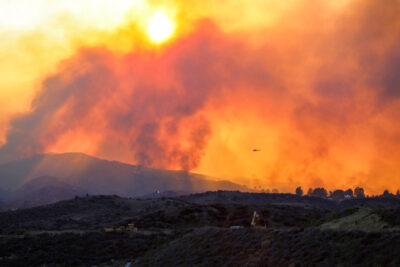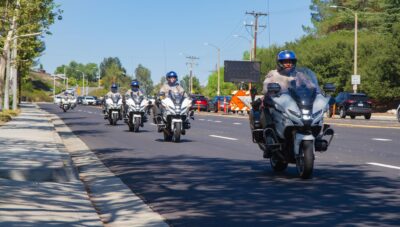Video is not merely a communications tool — it’s an avenue for cultural memory. Used with intention, it records, preserves, and amplifies local identity. Festivals, art exhibitions, parades, food festivals, and neighborhood traditions become more than minutes; they are stories people can access at any point, anywhere.
Local video speaks for communities in a unique way. Unlike mass media, which tends to reduce stories to stereotypes, well-crafted local videos allow for nuance. One brief film of a Haitian street party in Miami or mariachi music in East LA can introduce world viewers to perspectives they never imagined.
And in terms of building pride in community, few media do better. Seeing your language, corner street, or grandmother’s recipe on a screenshot with affection doesn’t just entertain; it’s authentic. It verifies. It makes people realize that their culture matters not only to them, but to others as well.
Driving Engagement With Community-Centered Visuals
Video is strongest when it appears like the individuals it is made for. People-oriented content gains credibility and boosts watch time. When natives view their familiar faces, place indicators, or activities, they watch longer and pass on. This familiarity is the key to engagement.
Focus On Familiarity
Shooting on recognizable locations does matter. It’s the corner bakery, the neighborhood school, or a landmark mural. These sites signal authenticity. Videos that are based on everyday locations communicate, “This is for you.” They invite the viewer in and communicate the message as personal.
One of the ways this model operates is the manner in which lv productions los angeles collaborates with local organizations in generating content that presents community voice and public space. Instead of staged scenes, they shoot ordinary interactions in ordinary settings—grounding civic activity in the real world and making it tangible and viable. It demonstrates that connection, and not polish, drives activity.
Use Real Voices
Wherever possible, do not use paid actors or stock footage. Interview local people, artists, organizers, and business owners. Let them speak in their own voices. Their own words are stronger than any script. People believe what feels real.
Prioritize Accessibility And Tone
Use clear language, subtitles, and accessible layout. Avoid corporate jargon or generic messages. Use a tone that mirrors the community — relaxed, authentic, and respectful.
Content must be a conversation, not a pitch. Community-driven videos won’t sell — they’ll connect. Draw from stories of service, pride, and shared values. Share the “why” behind the event, not the “what” or “when.”
Measure What Matters
Don’t chase views alone. Track shares, comments, and completions. Decent retention rates and social share typically mean your message is stuck. Listen to feedback and adjust accordingly.
Supporting Local Initiatives With Strategic Video Campaigns
Video is not only a medium for storytelling — it’s a strategic tool. Deliberately designed video messaging can put local causes front and center, generate event attendance, and win community projects funding or media coverage. The key is alignment: aligning the message with the audience, the format with the platform, and the tone with the mission.
Identify The Core Message
Each local campaign serves some specific purpose. It may be spiffing up a park, nurturing cultural activity, calling attention to a local health concern, or boosting voter registration while encouraging people to go out and vote. Before recording, identify the single concept the audience needs to take away. Then build the story tightly on it.
Don’t overwhelm the viewer with too many themes. Focused narrative results in focused action.
Build Campaigns Around Distribution, Not Just Production
Great content is wasted without effective distribution. Create videos from the start with platforms in mind. A 60-second Instagram reel needs a different pace than a three-minute YouTube explainer. Use video as part of a campaign strategy, not as a standalone asset.
For example, for promoting a neighborhood clean-up activity, utilize short vertical videos on local Instagram accounts and neighborhood Facebook communities. Include location hashtags, mention partners, and drop during prime engagement hours.
Work With Local Influencers And Organizations
Collaborate with partners who already enjoy community trust. Teachers, librarians, nonprofit directors, and neighborhood micro-influencers will share your video more than your budget can. Co-branded content or interviews with familiar voices bring credibility and reach.
The goal of video in this instance isn’t simply to educate — it’s to mobilize. Strategic planning, community engagement, and targeted distribution turn a nicely produced video into tangible outcomes.
Conclusion
Video, when used intentionally, can immortalize culture, galvanize communities, and bring focus to events that might otherwise go unseen. But good local storytelling requires more than a camera — it requires clarity, specificity, and true respect for the voice of the community.
The best campaigns have nothing to do with platitudes or flash. They’re about people, places, and purpose. They distill what matters most into stories that move audiences to care — and act.
LV Productions and similar brands understand that very well. Firmly embedded in grassroots video production, https://www.lv-prod.com/ doesn’t just offer technical expertise but also cultural sensitivities required to film stories that engage. Their work shows how quality video can bring together communities, enable artists, and voice grassroots causes without losing authenticity.
While more communities turn to online channels to broadcast their culture, the role of video will only grow. The only question is not if your community should be using video — but how well it can do so.






